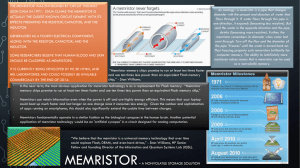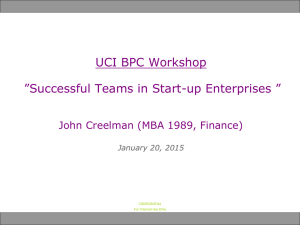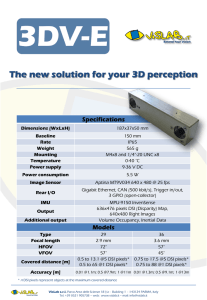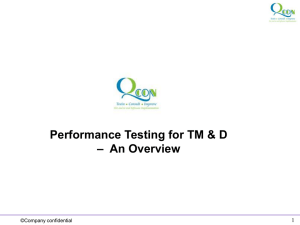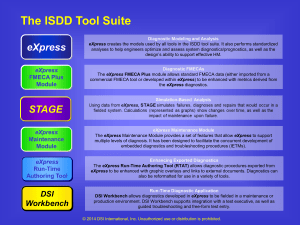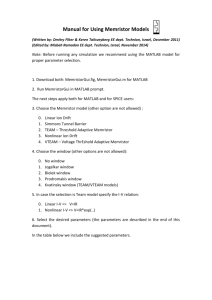Slides
advertisement
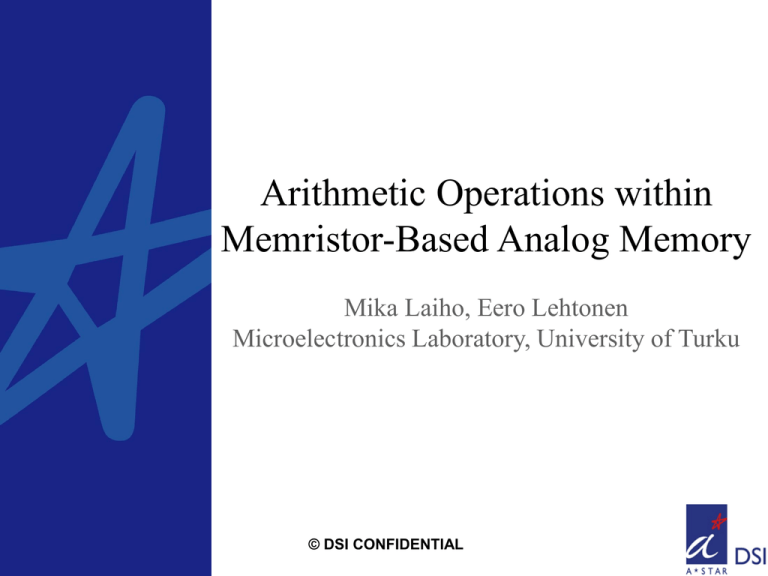
Arithmetic Operations within Memristor-Based Analog Memory Mika Laiho, Eero Lehtonen Microelectronics Laboratory, University of Turku © DSI CONFIDENTIAL Key Points Be able to program the memristor to the reference resistance using the cyclincally programming scheme Computing capability, such as addition, both on negative and positive analog conductance, is demonstrated © DSI CONFIDENTIAL Digital Memory verse Analog Memory Digital memory (1-bit information depending on ON/OFF state, including SRAM, DRAM, PCRAM, MRAM, Flash, etc.) Analog memory (many intermediate states between ON/OFF states) Memoristor can be used for both digital and analog memory © DSI CONFIDENTIAL Memristor Without programming threshold – – – Linearly programmed with charge flowing through the device AC readout for memory application Pose high requirements on R/W cycles With programming threshold – – Nonlinear programmed with charge flowing through the device DC readout possible © DSI CONFIDENTIAL Memristor With Programming Threshold Bipolar reversible and nonvolatile switching of nanoscale TiO2-x devices J. J. Yang et al., Memristor switching mechanism for metal/oxide/metal nanodevices, Nature Nanotechnology, 2008, 3, 429-433 © DSI CONFIDENTIAL Modeling Memristor The current through the memristor The time derivative of the state variable W The window function • ᵅ and ᵝ are fitting constants that are used to characterize the ON state • ᵡ and ᵞ are the fitting constants used to characterize the net electronic barrier when the memristor is switched OFF • a, b, p and q are constants depending on the physical properties of the memristor • w is the state variable of the memristor © DSI CONFIDENTIAL Simulated Memristor Characteristics Device simulation based on SPICE model © DSI CONFIDENTIAL Simulated Memristor Characteristics Device simulation based on SPICE model © DSI CONFIDENTIAL Memristor Analog Memory/Computing Circuit VSSR © DSI CONFIDENTIAL Memory/Computing Circuit Simulation V1 CT Vin Imem W Ir Circuit simulation based on SPICE model © DSI CONFIDENTIAL Processing as Summation Programming phase Monitoring phase gm1 = gm4 + gm5. © DSI CONFIDENTIAL Processing as Invertor © DSI CONFIDENTIAL Processing as Universal Addition © DSI CONFIDENTIAL Conclusions Memristors could be used as analog memories and for computing A two-memristor configuration was proposed to be used as a memory element so that addition operations of both positive and negative numbers could be performed Further study on performing multiplication and division is expected © DSI CONFIDENTIAL Limitations Control circuits for programming the memristors is too complicated increasing design complexity Many sequences are required leading to slow programming The programming time is unpredictable © DSI CONFIDENTIAL


